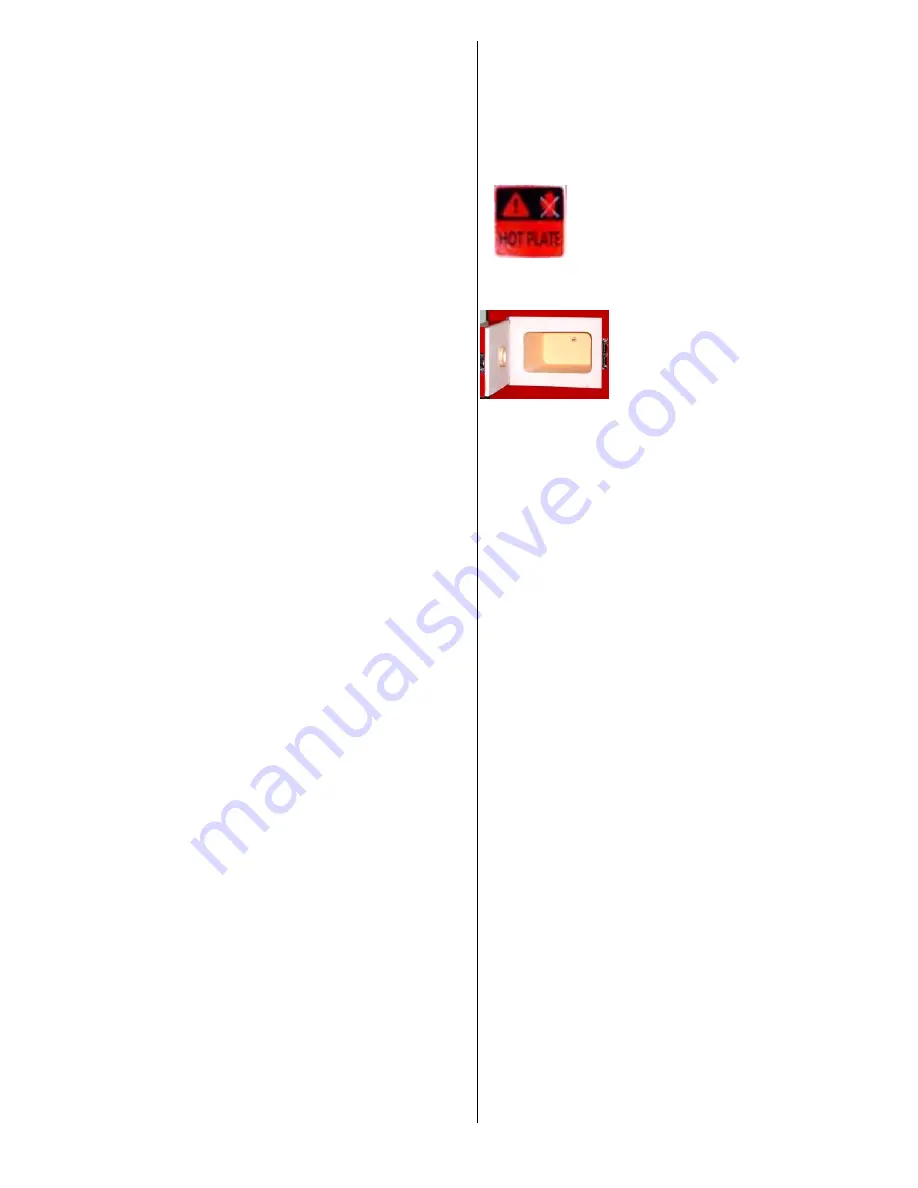
3
Starting To Heat:
The thermal isolation of your kiln contains
some cellulose type bonding materials. During the initial
heating, you will notice some fume or odor similar to burning
paper. It is harmless, as you would expect but ventilate your
place well and do not let persons with respiratory health
problems in the room until the odor is completely finished.
Firing Temperature and Hold Time:
The firing temperature
and the hold time of any material you would use are under your
responsibility. Refer to using instructions of the materials you
would consume
Loading The Kiln:
Do not put any object to be fired, directly
inside the firing chamber, but use some kind of ceramic tray to
avoid the object touching the heater chamber bottom. For
example, you can use a ceramic fiber shelf, alumina bowls, etc.,
according to your works.
Every time, put your kiln to “OFF” position before opening the
kiln door. Use protective glasses and work glows. Put the
objects to be fired on the ceramic tray, and place the tray into
the kiln with tongs long enough to protect you from heat and
close the door. Be sure that it is completely closed and turn the
switch to “Heater” position. Do not leave the kiln door open
longer than necessary and close it tightly. High heat which
would escape from the gaps between the door and the front side
of the heating chamber causes discoloration at the paints of the
kiln.
Because of opening the kiln for a short time, the temperature of
the heating chamber will fall some degrees which you would
see on the indicator. Wait until it reaches the temperature you
have adjusted and start your chronometer or alarm watch for
hold time.
Unloading of Fired Objects:
Turn your kiln to “OFF”
position. Put protective glasses and work glows on. Hold the
tongs, enameling tray, etc., open the kiln door, take the THE
CERAMIC TRAY out, with the fired object on it and close the
door. Leave it on the fire proof plate as it is and let it to cool.
Note: Do not hurry while loading and unloading but do it in a
short time. Do not leave the kiln door longer than necessary and
close it tightly. High heat which would escape from the gaps
between the door and the front side of the heating chamber
causes discoloration at the paints of the kiln. When taking a
break for a period, turn your kiln to”OFF” position. If you
would be by your kiln and want to watch the kiln temperature,
you may turn it to “DISPLAY” position where only shows the
temperature but not heats. When you complete your study, turn
your kiln to “OFF” position, unplug and leave it to cool the door
closed. To leave your kiln door fully or partially open is not
convenient. Heating chamber, ceramic surfaces can be
damaged, the painted surfaces adjacent to door opening can be
discolored, even burned.
********************************************
(6) IMPORTANT POINTS
Read the Instruction Guide:
Before operating your kiln read
every page of this guide carefully.
Maintenance:
Before any maintenance, be sure the kiln is
unplugged and completely cold.
Outer Surfaces of the Kiln:
Do not touch
these hot surfaces with bare hands, may cause
burns. Make the cleaning of these surfaces with
slightly wet soft cloth, when the kiln is cold
and unplugged. Do not use detergents, alcohol or any other
chemicals or abrasives.
Ceramic Surfaces:
The Heating Chamber,
the front face of the kiln isolation, inner face
of the door isolation are ceramic surfaces. Be
aware of touching them with sharp or
pointed instruments, you may damage them.
Do not touch heating elements which are embedded under these
ceramic surfaces. It may cause severe electric shock.
Embedded Heating Elements:
The heating element of
the
kiln is embedded around the heating chamber. This protects you
from an electric shock, if properly used. The surfaces of the
heating chamber are strong enough to stand proper tasks. But
never rub or scratch with inconvenient instruments. Do not
apply mechanical forces to ceramic and outer surfaces of your
kiln to avoid any undetectable damage which may cause serious
risks.
Protect Your Kiln From Harmful Materials:
Avoid the
heating chamber contamining with any other material not
recommended by our company for any purpose. Water, oils,
solvents, silica and silica involving substances, alumina hydrate,
enamel powders, glaze and glass can be absorbed by the
ceramic parts of the kiln and ruin the heating elements and
ceramic parts as well. Do not place glazed ceramics, glass and
enameling directly on the Firing Chamber bottom. Protect the
chamber from contamination of these, by using ceramic shelves
under your works. If such a contamination occurs, unplug the
kiln and carefully scrape the contaminant off the surface with a
knife and vacuum the residues. Be careful not to damage the
ceramic surfaces.
Cleaning the Heating Chamber:
Unplug and cool your kiln to
room temperature. Take out any residues with a soft brush
without leaving any hairs. If any contaminants left, carefully
scrape it with a knife and take it out. Vacuuming is also
recommended for inner cleaning.






















